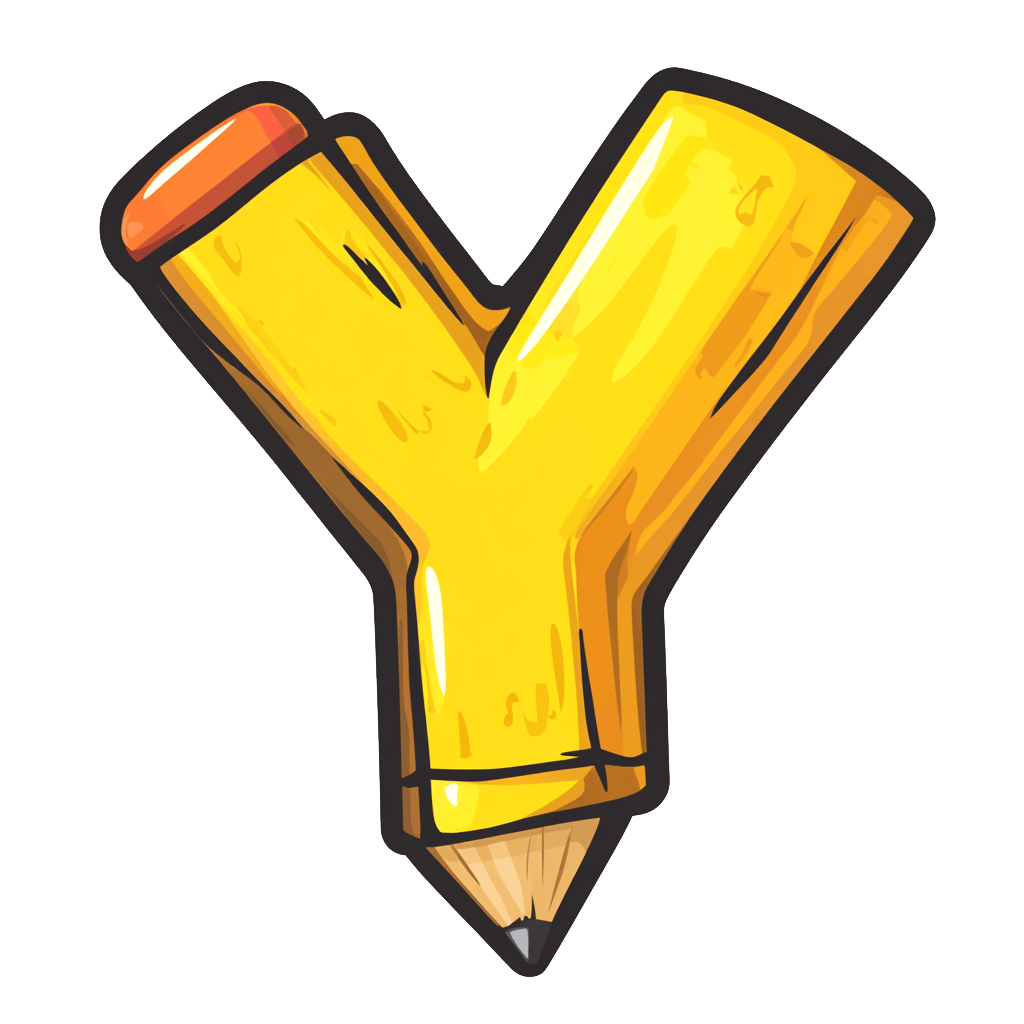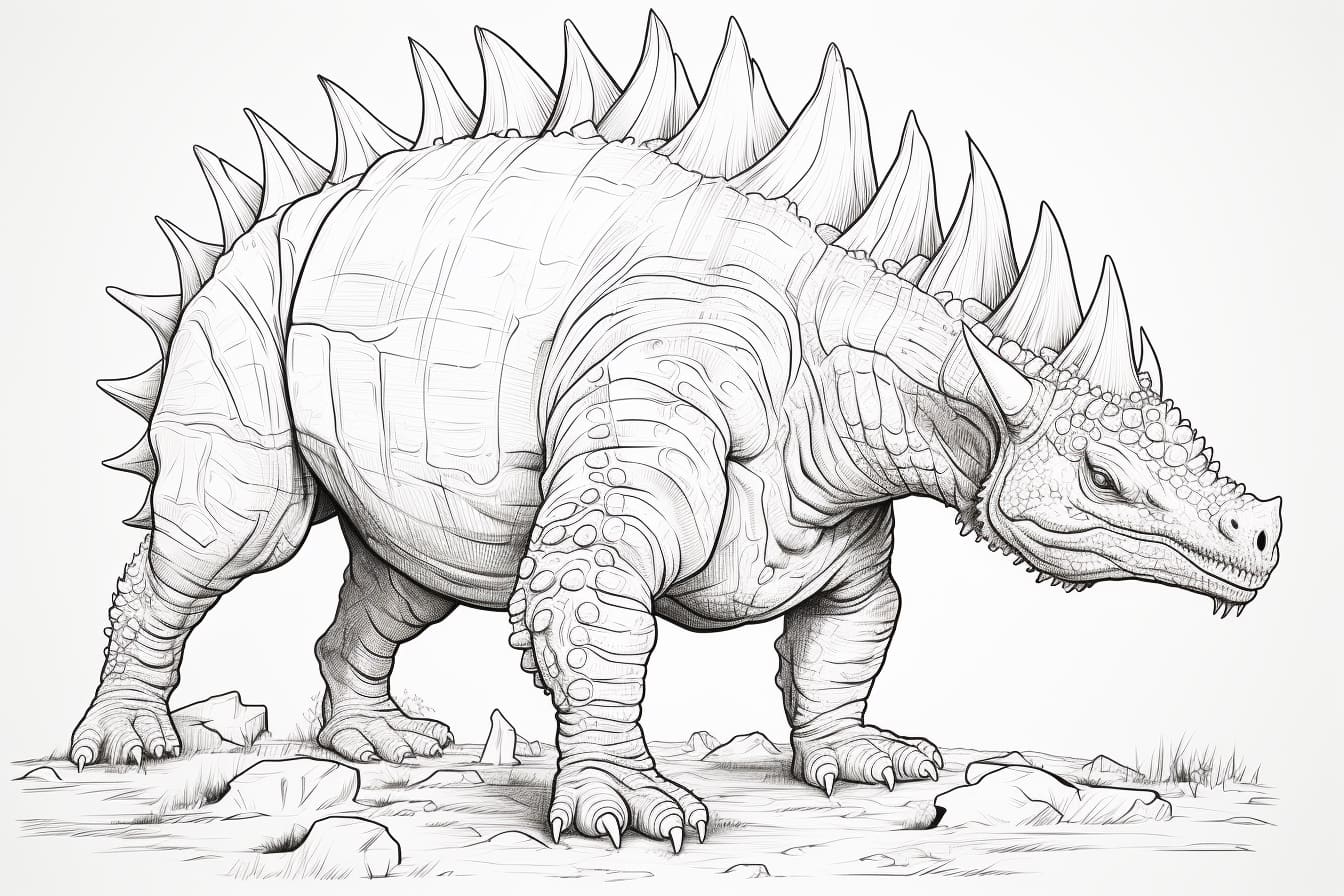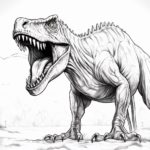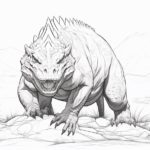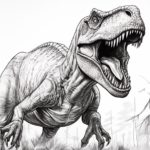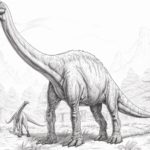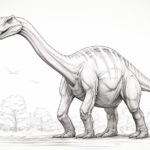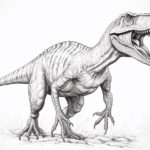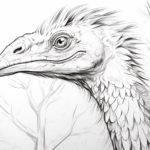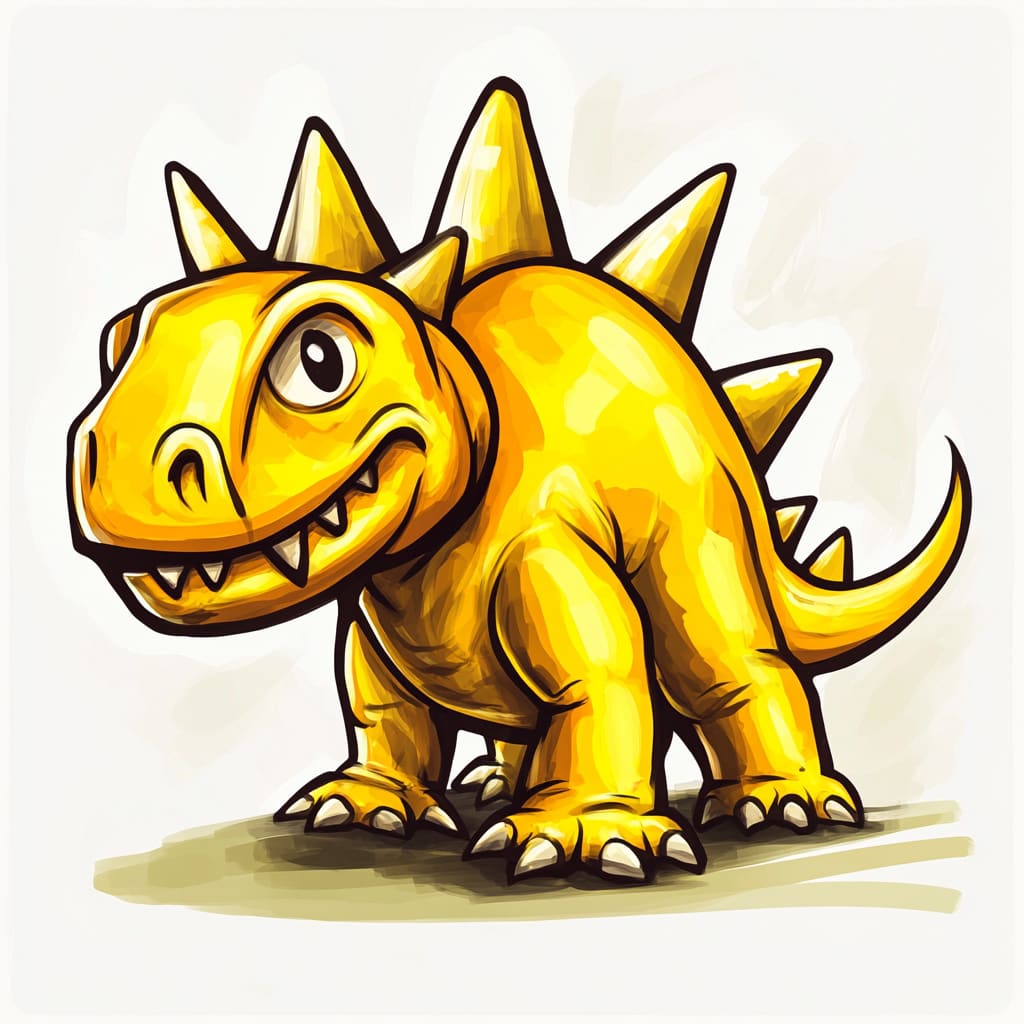
Welcome to the captivating realm of paleoart, where the distant past comes alive through the power of imagination and creativity! In today’s exploration, we’ll dive into the intricate and fascinating process of drawing a remarkable dinosaur known as the Kentrosaurus. This unique herbivorous creature is easily recognized by its impressive rows of sharp spikes that adorn its back, making it a standout figure from the Late Jurassic period. Each spike tells a story of adaptation and survival, and your task is to capture these details on paper.
Drawing the Kentrosaurus can be both a challenging and immensely rewarding experience. As you put pencil to paper, you’ll be faced with the exciting task of representing its distinctive anatomy, texture, and dynamic posture. Each detail, from the plates along its back to the curvature of its tail, presents an opportunity to enhance your artistic skills and deepen your understanding of these magnificent prehistoric creatures. So gather your materials, open your artistic mind, and prepare to embark on a thrilling journey that transcends time and brings the Kentrosaurus to life in your unique style.
Get ready to unleash your creativity as we explore step-by-step how to depict this fascinating dinosaur! Whether you’re a seasoned artist or a beginner seeking inspiration, this guide will equip you with the techniques needed to recreate the majestic Kentrosaurus on paper. Let’s sharpen our pencils and dive into the intriguing world of dinosaur drawing together!
Materials Required
To draw a Kentrosaurus, you will need the following materials:
- Pencil: For sketching and outlining the dinosaur.
- Eraser: To correct any mistakes or lighten lines.
- Paper: A sketch pad or drawing paper to draw the Kentrosaurus on.
- Reference image: A picture or reference of a Kentrosaurus for accuracy in drawing its features.
- Colored pencils or markers (optional): If you want to add color to your drawing.
- Ruler: Helpful for drawing straight lines or measuring proportions accurately.
- Fine-tip pens or markers: For adding details and defining lines in your drawing.
- Blending tools (such as a blending stump or cotton swab): To blend
How to Draw a Kentrosaurus: a Step-by-step Guide
Step 1: Gather Your Materials
Gather all the necessary materials for your drawing. You will need a pencil, eraser, paper, and any coloring materials you wish to use.
Step 2: Research and Reference
Before you start drawing, look up reference images of Kentrosaurus to familiarize yourself with its features and anatomy. This will help you accurately capture its unique characteristics.
Step 3: Start with Basic Shapes
Begin by sketching the basic shapes of the Kentrosaurus. Start with an oval for the body, a smaller oval for the head, and simple lines for the limbs and tail. This will serve as the framework for your drawing.
Step 4: Add Details
Once you have the basic shapes in place, start adding details to your Kentrosaurus drawing. Focus on its distinctive features such as the rows of plates along its back, spikes on its tail, and its small head with sharp teeth.
Step 5: Refine the Outline
Refine the outline of the Kentrosaurus, paying attention to the proportions and overall shape. Use light, confident lines to define the contours of the dinosaur’s body, limbs, and tail.
Step 6: Add Texture and Scales
To make your Kentrosaurus drawing more realistic, add texture and scales to its skin. Use short, overlapping lines to create the appearance of scales on its body and tail. Pay attention to the direction of the scales to give your drawing depth.
Step 7: Finalize Details
Add any final details to your Kentrosaurus drawing, such as the eyes, nostrils, and any additional features you want to include. Take your time to ensure that all the details are accurately represented.
Step 8: Erase Guidelines
Once you are satisfied with your drawing, carefully erase any remaining guidelines and construction lines. This will clean up your drawing and make the Kentrosaurus stand out more prominently.
Step 9: Add Color (Optional)
If you wish to add color to your Kentrosaurus drawing, use colored pencils, markers, or paints to bring your illustration to life. Refer back to your reference images to accurately depict the dinosaur’s coloring.
Step 10: Sign and Display
Finally, sign your artwork and consider displaying it proudly to showcase your drawing skills. Share your Kentrosaurus drawing with others to receive feedback and admiration for your work.
Tip: To effectively capture the essence of the Kentrosaurus, focus on breaking down its complex shapes into simpler geometric forms. Start with basic shapes: use ovals for the body and circles for the joints to establish a solid foundation. Pay special attention to the spikes and plates on its back—sketch these as elongated triangles, varying their sizes and angles to convey a sense of depth and perspective. For texture, utilize a combination of fine-tipped pens or pencils for detail work, and consider using softer shading techniques to represent the natural curves and musculature of the dinosaur. Don’t forget to study reference images to understand how light interacts with the spikes and body, as this will help you add realistic highlights and shadows, enhancing the overall three-dimensional feel of your drawing.
Conclusion
In conclusion, drawing a Kentrosaurus requires attention to detail, patience, and practice. By following the step-by-step guide outlined in this article, you can create a realistic and detailed representation of this fascinating dinosaur. Remember to take your time, experiment with different techniques, and enjoy the process of bringing this prehistoric creature to life on paper. With dedication and perseverance, you can continue to improve your drawing skills and capture the essence of the Kentrosaurus with confidence.
Fun Facts About Kentrosauruses
- Kentrosaurus was a type of stegosaurid dinosaur that lived during the Late Jurassic period, around 155 to 150 million years ago.
- It was named Kentrosaurus, which means “spiked lizard,” due to the large spikes that adorned its back and tail.
- Kentrosaurus had a distinctive double row of sharp, pointed plates running along its back, with pairs of long spikes on its tail.
- The spikes on Kentrosaurus’s tail were likely used for defense against predators, as well as for intraspecific combat and display.
- Kentrosaurus was a herbivore, feeding on plants and vegetation with its leaf-shaped teeth.
- It had a relatively small body compared to other stegosaurs, reaching lengths of around 13 feet (4 meters) and weighing up to 1,100 pounds (500 kg).
- Kentrosaurus had a relatively narrow skull with a beak-like structure at the front, which it likely used to crop vegetation.
- Fossil evidence suggests that Kentrosaurus may have lived in herds, possibly for protection against predators or for social interactions.
- Despite its formidable appearance, Kentrosaurus was likely a peaceful dinosaur that only used its spikes for defense when threatened.
- Kentrosaurus is one of the best-known stegosaurs and has been found in Tanzania, Africa, where several well-preserved specimens have been unearthed.
Suggestions for Scenes and Settings for Kentrosaurus Drawings
Absolutely, here are some scene and setting suggestions for drawings featuring Kentrosaurus:
- Prehistoric Forest: Illustrate Kentrosaurus grazing peacefully among lush ferns, towering cycads, and ancient trees in a dense prehistoric forest.
- Watering Hole: Capture Kentrosaurus drinking from a serene watering hole, surrounded by other dinosaurs such as Stegosaurus or Brachiosaurus, under the watchful eyes of a Pteranodon flying overhead.
- Volcanic Landscape: Place Kentrosaurus in a dramatic setting with an active volcano in the background, showing the dinosaur in a moment of alertness amidst the fiery skies and rocky terrain.
- Nesting Grounds: Show a family of Kentrosaurus caring for their young in a nesting site, with the adults standing guard while the adorable hatchlings explore their surroundings.
- Dusk at the Riverbank: Create a tranquil scene of Kentrosaurus at the riverbank during dusk, with the setting sun casting a warm glow on the water and the surrounding vegetation.
- Mountain Pass: Picture Kentrosaurus traversing a rocky mountain pass, with breathtaking views of the valleys below and snow-capped peaks in the distance.
- Cavern Exploration: Imagine Kentrosaurus exploring a mysterious underground cavern, illuminated by glowing crystals and inhabited by other prehistoric creatures like Troodons or Dimetrodon.
- Coastal Cliffs: Depict Kentrosaurus navigating steep coastal cliffs, with crashing waves below and seabirds soaring above, showcasing the diverse landscapes of the prehistoric world.
- Desert Oasis: Illustrate Kentrosaurus seeking refuge from the scorching sun at a desert oasis, with palm trees, a shimmering pool of water, and distant sand dunes creating a peaceful oasis setting.
- Treetop Canopy: Show Kentrosaurus climbing among the treetops of a dense jungle canopy, with colorful birds, insects, and other dinosaurs living harmoniously in this vibrant and lively environment.
I hope these ideas inspire your drawings of Kentrosaurus in various captivating scenes and settings!
